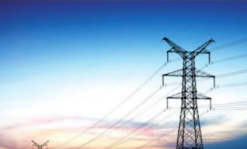On February 2021, the biggest state in the most developed country in the world, Texas, USA, faced an unprecedented event. Due to hurricane Uri, the Texas electricity grid was forced to shed a load, a lot of it. It left 4 million Texans without power for almost seven days. The power cut killed approximately 246 Texans, as reported by the state; other reports are grimmer, with more than 700 fatalities.
The total economic loss was an astounding $125 billion. A state considered an energy powerhouse faced such devastation, but surrounding states affected by the same hurricane fared much better. Case in point, Oklahoma, which borders Texas from the north, was also hit by Uri, in similar strength, but only lost power for a few hours, and the grid was restored right after. More importantly, no lives were lost.
Why were these two cases so different? A lot of light has been shed in the aftermath of Uri on what went wrong and why the Texas power grid, managed by the Electricity Reliability Council of Texas (ERCOT), could not handle the power flow. In an electric power grid, the demand must match the supply.
If there is a variance, the power system’s frequency is affected, resulting in grid failure. On February 14 and 15, 2021, a series of events forced ERCOT to curtail power. The demand for electricity due to the very large-scale weather events (VLSWEs) had risen to 68 gigawatts. Households began using energy-inefficient heating systems installed in most Texas homes to fend off the extreme cold.
At the same time, natural gas plants, which could not handle extreme cold, started shutting down. ERCOT had no choice but to curtail power to save the entire grid. If curtailment did not happen on time, the entire state would have lost power and getting the power system back would have taken up to a month. In essence, they did save the overall grid but at the cost of many lives. Governor Abbott even blamed the wind plants for the catastrophe, which he later corrected as wind is only a tiny percentage of the Texas electricity generation mix.
The United States electricity grid is made of three major sections, east, west and Texas. The entire country is interconnected, and power flows seamlessly across state borders apart from Texas. Texas is not connected to the rest of the power grid in the United States. Before World War II, Texas isolated its grid to stay free of federal regulations. It is also said that Texas did not want to send its power to the “damn Yankees”, a hangover from the civil war and a sense of Texas pride and independence.
This modality favoured Texas to some extent in the past, as it was untouched by the worst outage in the US history of 1965. But now, after multiple VLSWEs and many power cuts resulting in loss of lives, ERCOT has been forced to re-evaluate their strategy.
In the ever-changing energy climate, which strongly pushes for a clean energy transition, an interconnected grid is a must for the stability and reliability of the power grid and interconnect Variable Renewable Energy systems (VREs). If Texas was connected to the rest of the US power grid, it could have easily accessed the deficit electricity from its neighbouring states and avoided the devastation.
Nepal is one of the most vulnerable countries regarding climate change. Albeit a low carbon emitting country, it neighbours two of the most polluting countries in the world, India and China. Nepal’s glaciers are melting at an alarming rate, and air pollution from surrounding countries has put Nepal’s cities among the top polluted cities in the world. These vulnerabilities will result in frequent VLSWEs in the region. The cases of VLSWEs have tripled in Nepal in recent years compared to previous decades.
The recent flooding in Pakistan is a testament that this region is at the cusp of disaster, and Nepal is most unprepared. Unlike Pakistan, Nepal’s electricity mix is more lopsided, it depends primarily on hydropower for most of its electricity generation, and the remaining is imported from neighbouring India. Many of Nepal’s hydropower plants are installed in fragile river basins and are prone to landslides, floods, calamities, snow, glacier melting, and glacier lake outburst. More than 55 per cent of hydropower plants in Nepal are run of the river, which is more vulnerable to flooding.
The reliability and stability of the existing and future hydropower plants are essential for Nepal. The rapidly increasing temperatures in the Himalayas are causing snow to melt faster, causing floods and posing more risk to the sole electricity provider in Nepal. It would result in a major disaster for the country’s power sector if it lost a few large hydropowers in such climate changeresulting disasters.
The geography, financial and technical capacity of the nation would make it very challenging to restore hydro plants swiftly. In such an event, Nepal would face massive power cuts indefinitely. The saviour would be an interconnected grid or a diversified electricity mix. The first is an achievable goal, while the latter is a herculean task. Nepal’s electricity generation capacity is 2150 megawatts. As per 2019 International Energy Agency data, 100 per cent of generation is through hydropower. Fifty megawatts of large solar plants have come into operation since 2019, which is 2 per cent of the electricity mix.
Nepal relies on Indian imports to meet demand, especially during the dry season when hydro generation is low. The completion and upgrade of the Dhalkebar— Muzzafarpur interconnection has helped eradicate load shedding in Nepal and, in recent months, even export electricity to India. As of now, 900 megawatts of electricity can be transmitted via the Indian cross-border transmission line, with several more interconnections planned for the near future and another interconnection with China from the north. The prime objective of the power sector and Nepal Electricity Authority (NEA) is to provide a stable and reliable supply of electricity to its consumers regardless of the source of electricity. In its annual report,
NEA has stated that there are several ongoing interconnection projects between India-Nepal and China-Nepal. These projects will enable Nepal to access reliable electricity from its neighbours to manage excess demand. These interconnections pave the way to interconnect a higher percentage of VREs for all three countries as the availability of multiple sources across borders with stable power. In extreme events, cross-border power trade will ensure that the power grid remains stable and citizens won’t suffer from any power loss.
The only disadvantage for Nepal is it would have to compete with large electricity providers on both sides of the border with comparatively lower electricity prices. However, with a higher emphasis on clean energy transition, Nepal has its share of advantages. India is under pressure to transition away from coal, and energy prices are increasing across the globe. Meanwhile, Nepal, with its existing hydropower electricity and immense potential for solar generation, could complement the power requirements of its two large neighbours.












